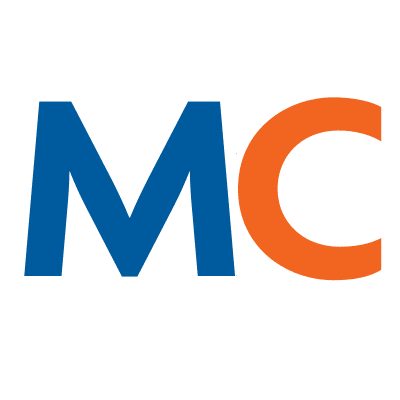- Solutions
- Solutions
- Home Health
- Hospice
- Life Plan Community
- Palliative Care
- Private Duty
- Senior Living
- Skilled Nursing
- Skilled Nursing
- Skilled Nursing Software
- Advanced Insights
- Customer relationship management
- Data and analytics
- Financial & operations management
- Marketing
- Nutrition management
- Referral management
- Regulatory compliance
- Retail management
- Resident engagement
- Revenue cycle management
- Skilled nursing interoperability
- Partners
- Blogs
- Resources
- About
- User Conference

AI at the frontline: From buzzwords to better outcomes
The real promise of AI isn’t found in conference rooms. It’s in the hands of caregivers.
We’ve all heard the buzz on artificial intelligence. Flashy dashboards. Vague promises. Complex tech demos.
For caregivers in skilled nursing facilities, life plan communities, home health, and hospice, the real value of AI is at the point of care.
What’s happening right now is a shift from theory to action. From boardroom curiosity to daily care routines. From abstract concepts to tangible impact on patient and resident lives.
This isn’t a futuristic concept. It’s already here. AI is showing up in real, meaningful ways at the point of care. And it’s reshaping how frontline staff do their jobs.
In this blog, we dig into what that actually looks like.
What is AI at the point of care?
Point of care means the exact moment care happens. It’s the conversation between a caregiver and a resident or patient. The medication pass. The wound check. The casual observation that something feels “off.”
AI is making a difference not as a replacement for caregivers, but as a diligent partner. One that can listen, remember, remind, and support, all without getting in the way.
Here’s what that support looks like in practice.
AI as your clinical and executive assistant
Care teams juggle countless tasks: Documentation, medication orders, scheduling, observation follow-ups, care plan updates, and so much more. All while trying to stay present with individuals they serve.
Technology today can help with:
- Voice and ambient documentation tools that listen during care interactions and generate structured notes automatically, no typing required
- Medication reminders and task prompts based on care protocols or specific diagnoses
- Real-time scheduling suggestions for follow-up care, labs, or specialist visits
- Streamlined order entry, reducing the need to re-enter data post-visit
Think of it like having a personal assistant in your corner, one that already knows the patient or resident’s history and can nudge you with helpful reminders in the moment.
Smart documentation without lifting a finger
Documentation takes time. And when you’re short-staffed, time is your most precious resource.
AI-powered ambient tools are changing that. These tools can:
- Listen to natural conversation between caregivers and the individuals they serve
- Interpret and structure that information automatically
- Capture everything in the proper EHR fields
- Free up caregivers to focus on connection, not keyboards
Care teams don’t need to recall everything later or worry about missing details. The system remembers, captures, and files it all in real time.

Better insights than your average AI dashboard
High-level dashboards have their place. But at the point of care, caregivers don’t need broad trends. They need actionable prompts.
Enter AI risk assessment at the point of care.
Today’s AI can:
- Flag individuals who may be at risk for falls or hospitalizations
- Remind staff to re-check vitals based on existing conditions
- Suggest care tasks in the moment, not hours or days later
- Surface subtle observations from past visits that may not be obvious
For example: if someone with hypertension hasn’t had a recent blood pressure reading, the system can suggest one before the visit ends. That prompt might seem obvious, but it can prevent one small issue from turning into something serious.
This is what separates helpful AI from a generic dashboard. It supports clinical decisions in real time, not just in hindsight.
Devices that extend your care team
You can’t be everywhere. But AI-powered tools can extend your presence, especially in settings with lower acuity or staffing gaps.
Here’s how:
- Wearables and passive monitors collect vitals like heart rate and blood pressure continuously, not just once per shift or visit
- Wound assessment tools analyze healing progress through image recognition, flagging changes that might signal infection or complications
- Environmental sensors alert staff to mobility changes or falls, supporting real-time fall risk assessment
- Medication dispensers ensure correct timing and doses, reducing the chance of missed meds or duplications
These tools don’t replace the caregivers. They enhance their presence and lighten the load of repetitive tasks, giving care teams more time to focus on what requires human judgment and empathy.
Supporting frontline staff, not replacing them
Let’s be clear: AI won’t replace caregivers. But caregivers who use AI will replace those who don’t.
That’s because these tools create time. They reduce friction. They catch what humans sometimes miss, especially during long, busy days.
Here’s what that means for frontline staff:
- Less documentation fatigue
- Fewer duplicate tasks
- More confidence that nothing critical is missed
- More time with the individuals they care for
The result? This can translate into higher staff satisfaction, better clinical outcomes, and improved care experiences for patients and residents alike.
It’s not about taking the human out of healthcare. It’s about letting technology handle the noise.
Small changes, big outcomes
Sometimes, the most powerful impact of AI at the point of care is in the smallest moments:
- A wound that’s caught early because the system noticed subtle changes
- A medication order that’s flagged for timing before it’s late
- A reminder to ask about insomnia based on previous concerns
- A vitals alert that triggers follow-up before it becomes an emergency
These moments add up. They change outcomes. They reduce hospitalizations. They build trust between care teams and the people they serve.
And most importantly, they give caregivers a little more breathing room and peace of mind.
What this means for care leaders
If you lead operations, nursing, or technology in a care organization such as a skilled nursing facility, life plan community, home health agency, or hospice, here’s what to consider:
- Don’t wait for a perfect AI solution. Focus on tools that deliver immediate value at the point of care
- Prioritize technologies that blend into your workflow, not add to it
- Invest in systems that reduce documentation time, not just analyze it later
- Look for solutions that empower your frontline staff, not just your executive team
Ask your teams what slows them down. Then explore ways AI can support (not replace) their workflow.
The best AI doesn’t feel like AI. It feels like having a good assistant who never forgets and never sleeps.
Invested in real-world AI for real-world care
At MatrixCare, we understand the daily challenges care providers face across long-term and post-acute care settings. We also know that flashy features and AI buzzwords don’t matter if they don’t help staff at the point of care.
That’s why we’re focused on practical, proven, point-of-care AI that supports clinical thinking, reduces administrative work, and helps improve outcomes without disrupting the rhythm of care.
From documentation and medication support to real-time risk alerts and smart scheduling, our solutions are designed to fit into the real-life flow of frontline staff.
We believe the future of AI in long-term and post-acute care is already here. And it’s not about replacing caregivers. It’s about helping them do what they do best with fewer distractions, better insights, and stronger support.
Whether you’re navigating the demands of a skilled nursing facility, a life plan community, or home-based care, AI can help, and we can show you how.
Request a demo today for a closer look at MatrixCare.
Daniel Zhu
Daniel Zhu comes from a diverse background of clinical experience and technology entrepreneurship. Having spent five years in clinical and clinical research roles with the Alberta health system and the University of Toronto health network, he has diverted his medical expertise to architecting and building technology solutions to optimize health care practice. At various organizations, he has lead engineering teams, product teams, and founded his own natural language processing start-up in the clinical research space. Stepping away from the start-up world, Daniel has spent time as a data consultant for large corporations such as Ford, Co-op, and RBI. Re-entering the health technology field, today Daniel has recently joined the ResMed and MatrixCare team to lead the productization of AI and machine learning capabilities.
Related Posts



See MatrixCare in action
Start by having a call with one of our experts to see our platform in action.
MatrixCare offers industry-leading software solutions. Thousands of facility-based and home-based care organizations trust us to help them improve efficiency and provide exceptional care.





